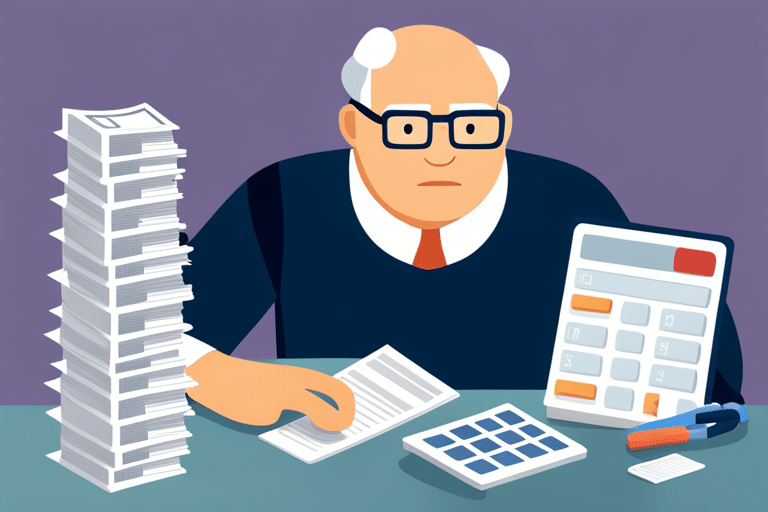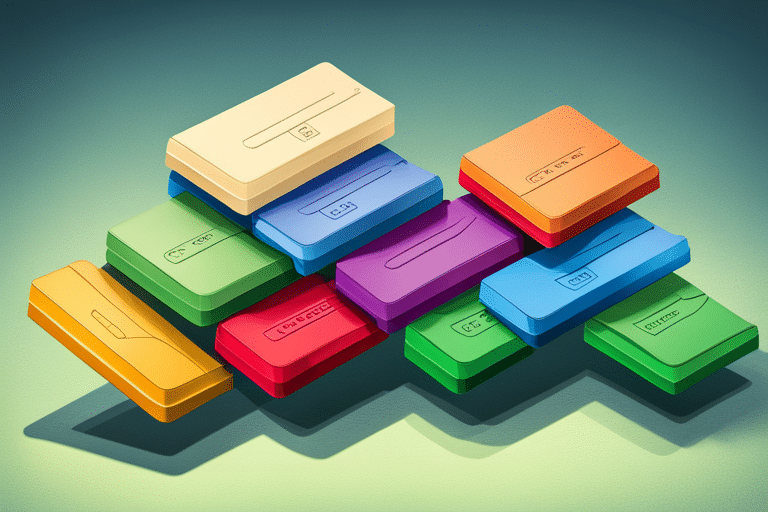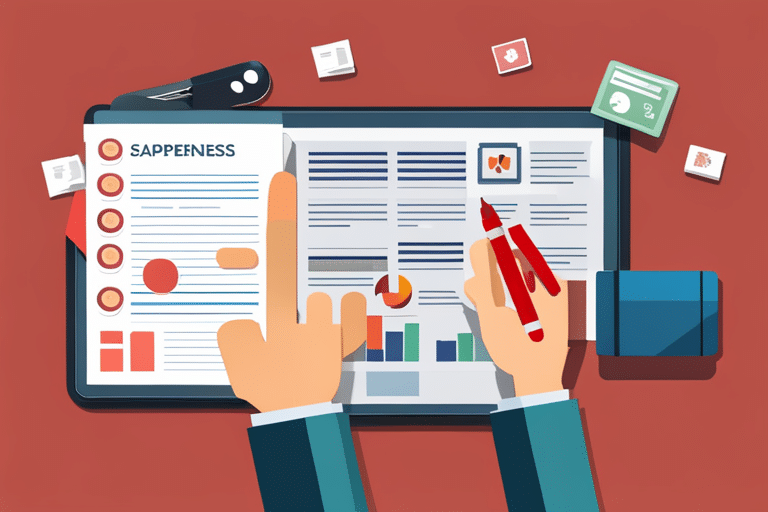Are you tired of drowning in debt? Well, you’re not alone! Did you know that a staggering 80% of Americans are burdened by some form of debt?
But fear not, because there is a way out. It’s time to embark on the road to debt-free living. In this article, we will guide you through practical steps to take today.
So grab a pen and paper and get ready to regain control of your finances. Let’s start this journey towards financial freedom together!
Key Takeaways
- Gather all financial documents and create a clear overview of your income and expenses.
- Create and stick to a budget that prioritizes essential expenses and allows for saving.
- Identify and eliminate unnecessary expenses to free up funds for debt repayment.
- Explore opportunities to increase your income through side hustles, career advancement, or continuous learning.
Assess Your Current Financial Situation

Before you can start working towards a debt-free life, it’s important to assess your current financial situation. Think of it as taking a snapshot of where you stand financially. This financial assessment will help you understand the extent of your debt and determine the best course of action moving forward.
Start by gathering all your financial documents – bank statements, credit card bills, loan agreements – and organize them in one place. Take a deep breath, because this is where the real work begins. It’s time for some debt evaluation!
Grab a pen and paper (or open up that fancy spreadsheet) and make two columns: one for your income and another for your expenses. Write down everything! From your daily cup of coffee to those monthly subscriptions you forgot about. Be honest with yourself; this is no time for sugar-coating.
Once you have all the numbers laid out in front of you, take some time to analyze them. Look for patterns or areas where you could cut back on spending. Are there any unnecessary expenses that could be eliminated? Can you negotiate lower interest rates on your debts?
Create a Budget and Stick to It

To successfully manage your finances, it’s important to create a budget and stick to it. This is the key to achieving financial discipline and tracking your expenses effectively. Picture this: on one side of the table, you have your income, and on the other side, you list all your expenses. It’s like a game of balancing act, but instead of juggling balls in the air, you’re juggling numbers! Here’s a handy 2 column by 4 row table to help you get started:
| INCOME | EXPENSES |
|---|---|
| Salary | Rent |
| Freelance work | Utilities |
| Side hustle | Groceries |
| Investments | Entertainment |
Now that you have a visual representation of where your money comes from and where it goes, it’s time to take control. Start by allocating specific amounts for each expense category based on priority. Be realistic but also mindful of saving some money for emergencies or future goals.
Cut Unnecessary Expenses

Hey there, budgeting guru!
Now that you’ve tackled the art of creating a solid budget and cutting unnecessary expenses, it’s time to dive into the next phase: budgeting for essentials and prioritizing your financial goals.
In this discussion, we’ll explore how to ensure that your basic needs are covered while still making progress towards those big dreams.
Get ready to strike the perfect balance between living comfortably and achieving financial success!
Budgeting for Essentials
Creating a budget helps you prioritize and allocate financial resources for your essential expenses. It’s like putting on your financial superhero cape and taking control of your money-saving destiny!
First things first, let’s talk about the importance of having an emergency fund. Picture this – a rainy day comes knocking on your door, but instead of panicking, you calmly reach into your emergency fund and save the day! Woosh! Now that you have some peace of mind, let’s dive into some money-saving tips.
Cutting back on unnecessary expenses is great, but don’t forget to also budget for those essentials that keep you going. Whether it’s food, housing, transportation or healthcare, allocating funds to these areas will ensure that you’re covered when life throws curveballs at you.
Prioritizing Financial Goals
Now that you’ve got your emergency fund in place, let’s talk about how to prioritize your financial goals.
Setting financial goals is like making a delicious recipe for success. You need the right ingredients and a well-thought-out plan. Start by identifying what matters most to you – whether it’s saving for a dream vacation, buying a home, or paying off debt.
Once you have your goals in mind, it’s time to come up with some savings strategies. Look at your budget and see where you can cut back on expenses or find ways to save more money each month. Remember, every dollar counts!
By prioritizing your financial goals and implementing smart savings strategies, you’ll be well on your way to achieving financial mastery.
And speaking of increasing your income…
Increase Your Income

If you want to increase your income, it’s important to find additional sources of revenue. Don’t worry, we’ve got some creative and lighthearted ideas for you!
Have you ever considered starting a side hustle? It’s like having a secret money-making superpower. Whether it’s selling handmade crafts on Etsy or driving for a ride-sharing service, there are endless possibilities. Not only will a side hustle bring in extra cash, but it can also be a fun way to explore your passions and talents.
But what if you’re more focused on career advancement? Well, fear not! There are plenty of ways to boost your income within your current job too. Look for opportunities to take on additional responsibilities or projects that showcase your skills and dedication. Don’t be afraid to speak up and let your boss know that you’re ready for the next level. And remember, continuous learning is key! Invest in yourself by attending workshops or taking online courses to enhance your knowledge and expertise.
Prioritize Your Debts

When it comes to managing your finances, it’s important to prioritize your debts. But don’t worry, you’ve got this! Here are four steps to help you tackle those debts head-on and pave the way to a debt-free future:
-
Snowball method: Start by listing all your debts from smallest to largest, regardless of interest rates. Make minimum payments on all of them except the smallest one. Throw as much money as you can at that smallest debt until it’s paid off. Once that’s done, move onto the next smallest debt and repeat the process. As each debt gets paid off, you’ll gain momentum and motivation!
-
Debt consolidation: If you have multiple high-interest debts, consider consolidating them into one lower-interest loan or credit card. This simplifies your payments and may reduce the overall amount of interest you pay.
-
Cut unnecessary expenses: Take a hard look at your spending habits and identify areas where you can cut back. Maybe it’s eating out less often or canceling subscriptions you don’t use anymore. Every dollar saved can be put towards paying off your debts faster.
-
Increase income streams: Explore ways to boost your income, like freelancing or taking on a side gig. The extra cash can be used exclusively for paying down debts.
Now that you know how to prioritize your debts, let’s dive into another crucial step: negotiating lower interest rates with creditors…
Negotiate Lower Interest Rates

To improve your financial situation, consider negotiating lower interest rates with your creditors. Yes, you heard that right! It’s time to put on your negotiation hat and take control of your debt.
Lowering interest rates can make a huge difference in how much you ultimately pay back, so it’s definitely worth a shot.
First things first, gather all the necessary information about your debts. Take note of the current interest rates and any other fees or charges associated with each one. Armed with this knowledge, you’ll be ready to approach your creditors and make a compelling case for why they should lower those pesky interest rates.
When negotiating, be confident but polite. Explain your situation honestly and emphasize your commitment to paying off the debt. You might also mention any financial hardships or changes in circumstances that have made it difficult for you to meet your obligations.
Remember, the key here is to find a win-win solution for both parties involved. Your creditors want their money back, and you want some relief from high interest rates. By showing them that lowering the interest rate will increase their chances of getting paid in full, they may be more willing to work with you.
Set up a Debt Repayment Plan

Setting up a debt repayment plan is crucial for effectively managing your financial obligations and working towards becoming debt-free. It may feel overwhelming at first, but with the right mindset and strategy, you can conquer your debts and achieve financial freedom.
Here are four steps to help you get started:
-
Debt Snowball Method: This approach involves paying off your smallest debts first while making minimum payments on larger ones. As you eliminate smaller debts, you gain momentum and motivation to tackle bigger ones. It’s like rolling a snowball down a hill, gathering speed as it goes.
-
Create a Budget: Take control of your finances by creating a realistic budget that accounts for all your income and expenses. Identify areas where you can cut back on spending to free up more money for debt repayment.
-
Track Your Progress: Keep track of every payment you make towards your debts. Seeing the numbers decrease over time will give you a sense of accomplishment and keep you motivated to stay on track.
-
Consider Debt Consolidation: If juggling multiple debts becomes too overwhelming, consider consolidating them into one loan with lower interest rates or monthly payments. This can simplify your repayment process and potentially save you money in the long run.
Stay Committed and Track Your Progress

Tracking your progress and staying committed to your debt repayment plan is essential for achieving financial freedom. It may seem daunting at times, but with the right mindset and a few tips, you can stay motivated on your journey to becoming debt-free.
Firstly, it’s important to celebrate small wins along the way. Paying off even a small portion of your debt is an accomplishment worth acknowledging. Treat yourself to something special—a coffee from your favorite café or a movie night with friends—to reward yourself for each milestone reached. These little celebrations will help keep you motivated and remind you of the progress you’re making.
Another tip for staying motivated is to visualize your end goal. Imagine what life will be like when you are finally free from the burden of debt. Picture yourself living comfortably, without financial stress weighing you down. This visualization can serve as a powerful motivator during challenging times.
Lastly, surround yourself with supportive people who understand and encourage your goals. Share your progress with them, lean on them for support when needed, and celebrate together when milestones are reached.
Frequently Asked Questions
How Do I Assess My Current Financial Situation?
To assess your financial situation, start by taking a close look at your income, expenses, and debts. Creating a budget will help you see where your money is going and make necessary adjustments for debt-free living.
What Are Some Common Unnecessary Expenses That I Can Cut?
Cutting unnecessary expenses is a key step towards debt-free living. Look for ways to trim the fat from your budget, like ditching that daily latte or canceling unused subscriptions. Get creative and watch your savings grow!
How Can I Increase My Income to Help Pay off Debt?
To increase your income and pay off debt, explore side hustles like freelance work or starting a small business. Additionally, try budgeting techniques such as cutting unnecessary expenses and saving money on everyday purchases.
What Is a Debt Repayment Plan and How Do I Set One Up?
Creating a debt repayment plan is key to becoming debt-free. Start by creating a budget and understanding interest rates. It may seem daunting, but with determination and discipline, you’ll be on your way to financial freedom in no time!
How Can I Track My Progress in Becoming Debt-Free?
Track your progress in becoming debt-free by creating a visual chart or spreadsheet. Update it regularly, celebrating each milestone along the way. Stay motivated by reminding yourself of the freedom and peace that come with being debt-free.
Conclusion
Congratulations! You’ve embarked on a remarkable journey towards debt-free living. Just like a brave explorer navigating a treacherous path, you assessed your financial situation, created a budget, and cut unnecessary expenses.
With unwavering determination, you increased your income and prioritized your debts. Like a skilled negotiator, you secured lower interest rates and set up a debt repayment plan.
Through it all, you stayed committed and tracked your progress like an eagle soaring through the sky. Remember, every step forward brings you closer to the freedom and joy of a debt-free life!
Keep going, my fearless friend!

